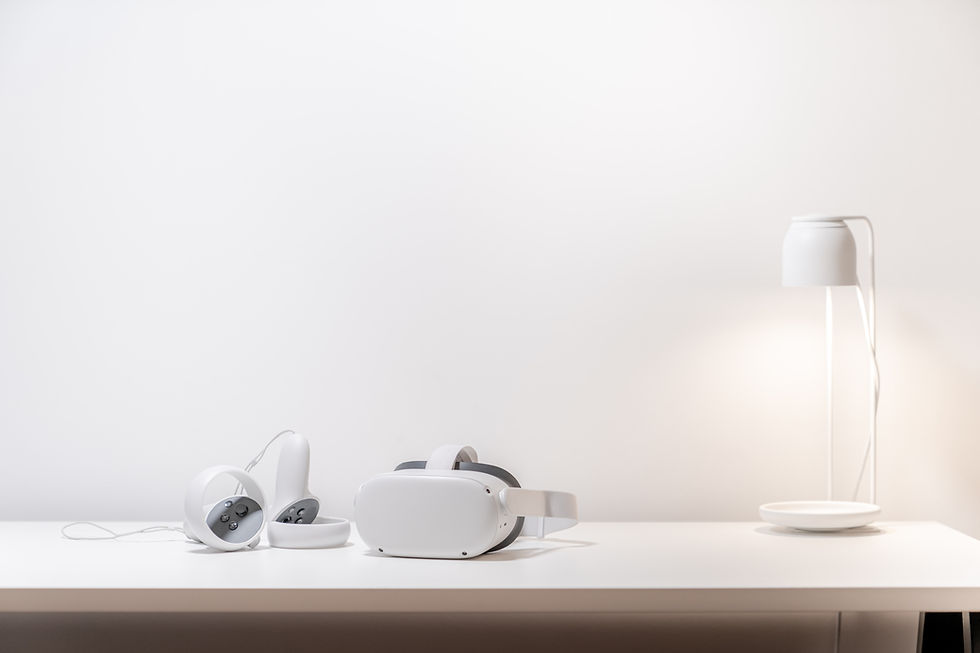Can Art and AI coexist?
- The Doodle People
- May 27, 2024
- 4 min read

Ever since Generative AI was made available to the public, there have been non-stop debates on their uses, the ethical considerations and the impact to artists.
Public Perception and Market Dynamics
Consumer Attitudes Towards AI Art
The introduction of AI into the art world has sparked a range of reactions from the public. Some individuals are overwhelmingly scared of the imminent shift in how art is created and perceived. Others are more open to the possibilities, seeing AI as a tool that can aid in the continuous growth of the industry. This dichotomy in consumer attitudes is crucial for understanding the future trajectory of AI in art.
Market Value of AI-Generated Art
In 2019, the global AI art market was valued at around $50.4 million, reflecting the growing significance and impact of artificial intelligence on the art market. This valuation suggests that AI-generated art is not just a passing trend but a sector with substantial economic potential. The market dynamics are influenced by both the novelty of AI art and its increasing acceptance among certain groups of collectors and investors.
Institutional Responses
The art world’s gatekeepers, including galleries, museums, and critics, have shown varied responses to AI-generated art. Some institutions are embracing the technology, incorporating AI artworks into their collections and exhibitions. Others remain skeptical, questioning the artistic value and originality of AI-generated pieces. This selective review of public perspectives and institutional responses will ultimately contribute to mapping out the nuance of the art industry’s future.
Ethical Considerations in AI-Driven Art
Authorship and Ownership
The integration of AI in the artistic process raises important questions regarding ethics, ownership, and the role of the artist. As AI algorithms become more sophisticated, they can generate pieces that challenge traditional notions of authorship. Some argue that AI-generated art should be attributed to the algorithm or the collective effort of both the artist and the AI system.
Transparency and Accountability
AI systems are only as good as the data they are trained on. Unethical data collection practices can lead to biased outputs, which in turn affect representation in AI-generated art. Ensuring fairness and transparency in AI systems is crucial to fostering trust and addressing biases.
Transparency in the creation process of AI-driven art is essential. Artists and developers must be clear about the role of AI in their work to maintain accountability. Explainable AI & its relevance in today's era of generative AIs cannot be overstated, as it helps in understanding and trusting the outputs generated by these systems.
The Impact of AI on Traditional Art Forms
Transformation of Visual Arts
Generative AI has had a significant impact on traditional art forms, transforming the way they are created and experienced. One example is the field of painting, where AI algorithms generate intricate designs and patterns that were previously unexplored. This transformation has opened up new avenues for artistic expression, sometimes inspiring artists, helping them explore uncharted territories and push the boundaries of their creativity.
AI in Music and Performance
In the realm of music and performance, AI is being developed to assist in live performances, and even create virtual performances. Some are also used to assist in the generation of a entire music pieces. These advancements have brought about music that blends human creativity with machine precision. Musicians and performers are now able to experiment with new sounds and styles, enriching the musical landscape.
Literature and AI
AI's influence extends to literature, where it is being used to generate poetry, write novels, and assist authors in the creative process. AI-driven tools can analyze vast amounts of text to identify patterns and suggest plot developments, character arcs, and stylistic improvements. This collaboration between human authors and AI has the potential to revolutionize the literary world, offering new ways to tell stories and engage readers.
Notable Artists Integrating AI into Their Work
AI as a Creative Assistant
Artificial intelligence has made remarkable strides in various fields, and the art world is no exception. Artists are leveraging AI algorithms to explore novel techniques, tap into new forms of expression, and push the boundaries of creativity. To some artists, AI serves as an inspirational tool, a creative assistant, and even a collaborator, pushing the boundaries of artistic expression.
Sougwen Chung's Robotic Collaborations
Sougwen Chung is renowned for her collaborative paintings with AI-guided robots. Her work exemplifies how AI can serve as a creative partner, pushing the boundaries of traditional art forms. Chung's innovative approach challenges the conventional notions of authorship and creativity, making her a pioneer in the field of AI-art integration.
Mario Klingemann's Portraits
Mario Klingemann, a prominent figure in AI-generated art, uses neural networks to create captivating portraits. His work explores the intersection of technology and human creativity, offering a fresh perspective on digital art. Klingemann's portraits are not just visually striking but also provoke thought about the role of AI in artistic expression.
Conclusion
In conclusion, the coexistence of art and AI presents a fascinating and complex landscape. We have seen how AI could revolutionize game development and as artists like Sougwen Chung and Mario Klingemann demonstrate, the integration of AI into the artistic process can lead to groundbreaking and imaginative works. AI can be an inspirational tool, a creative assistant, and a collaborator, pushing the boundaries of artistic expression. However, this collaboration also brings forth critical discussions about ethics, ownership, and the future of art consumption. While AI will not replace human creativity, it offers a new dimension where human imagination and machine intelligence can harmoniously intertwine. By embracing this symbiotic relationship and fostering dialogue among artists, academics, and institutions, we can shape a future where art and AI not only coexist but also complement and enhance each other in meaningful, sustainable, and equitable ways.




Comments